Ski: 2021-2022 Black Crows Serpo, 180.1 cm
Test Location: Mt. Crested Butte, Colorado
Days Skied: 9
Available Lengths: 168.2, 174.1, 180.1, 186.3 cm
Blister’s Measured Tip-to-Tail Length (straight-tape pull): 179.1 cm
Stated Weight per Ski: 1825 grams
Blister’s Measured Weight per Ski: 1824 & 1835 grams
Stated Dimensions: 131-93-115 mm
Blister’s Measured Dimensions: 131.1-92.3-114.9 mm
Stated Sidecut Radius (all lengths): 20 meters
Measured Tip & Tail Splay (ski decambered): 53 mm / 20 mm
Measured Traditional Camber Underfoot: 3 mm
Core Materials: poplar + titanal (2 H-shaped plates) + fiberglass laminate
Base: sintered
Factory Recommended Mount Point: -7.75 cm from center; 81.8 cm from tail
Boots / Bindings / Wax: Tecnica Mach1 MV 130, Atomic Hawx Ultra 130 / Salomon Warden MNC 13 / MountainFlow All-Temp

Intro
Black Crows added three brand-new skis to their lineup for the 2021-2022 season. There’s the wild-looking Mirus COR, the skimo-oriented 80mm-wide Mentis Freebird, and the ski we’re talking about here, the 93mm-wide Serpo.
Sitting in the brand’s “all-terrain” collection, the Serpo is designed to be a bit like a narrower, more accessible version of the 100mm-wide Black Crows Justis.
Now, the design of the Justis was already quite different than most 100mm-wide skis, but the narrower Serpo’s stands out even more compared to other ~93mm-wide skis. So first we’ll get into what this ski is all about and how its design compares to the current crop of narrower all-mountain skis, and then we’ve now updated this post with our full review.
What Black Crows say about the Serpo
“A newcomer in all-terrain skiing, the Serpo is designed for the piste and partially for off-piste. With 93mm at the waist, it’s a good carver, it’s there to really play with the terrain with its good flex and responsiveness together thanks to its layer of metal for grip and stability. But this does not erase the ease and pleasure of the game.”
Nothing super odd here. The Serpo is supposed to handle a bit of everything, from carving groomers to “playing” in off-piste terrain.
Construction
The Serpo features a very similar core construction to the Justis. Both skis get a poplar wood core, a fiberglass laminate, and two H-shaped titanal plates. Those metal plates extend edge-to-edge around the bindings, but then they split as you move to the tips and tails, with thinner pieces sitting over the edges of the ski and no metal in between. Those thinner portions extend to cover roughly 2/3rds the length of the ski. The idea here is that you get good torsional rigidity and damping underfoot, but with a more compliant and lighter feel near the extremities.
Shape / Rocker Profile
The Serpo looks a whole lot like a narrower Justis. Both skis feature very minimal early taper at the tips or tails, but pair that with surprisingly deep rocker lines (though the Serpo’s rocker lines are not as deep as those on the Justis).
Looking at other skis around the same width, the Serpo’s shape is in line with pretty directional, traditional skis such as the Volkl M6 Mantra and Blizzard Bonafide / Brahma. On the other hand, the Serpo’s deep rocker lines are more in line with playful skis like the Blizzard Rustler 9 and Fischer Ranger 94 (though the Serpo doesn’t really have a twinned tail like those skis).
Flex Pattern
Here’s how we’d characterize the flex pattern of the Serpo:
Tips: 6
Shovels: 6-7
In Front of Toe Piece: 7-9
Underfoot: 9.5
Behind the Heel Piece: 9.5-8
Tails: 7.5-7
Looking at the Serpo, you might think it’s just a skinnier Justis. But flex the two, and you’ll notice a significant difference.
The Justis has a very stout tail, and generally a flex pattern that I’d call pretty strong overall. The Serpo, on the other hand, has a significantly softer tail and its flex pattern doesn’t ramp up in stiffness as quickly when moving from the tips or tails to the stiffer midsection.
Overall, the Serpo’s flex pattern is pretty similar to the Blizzard Rustler 9, with the Rustler 9 being a bit stiffer at the very ends. The Serpo’s flex pattern also feels pretty similar to the 20/21 Liberty Origin 96, though the Origin 96 feels a touch stiffer just outside the binding area.
All that said, I was a bit surprised when I hand-flexed the Serpo. I was able to spend a day on it this spring, and while it certainly felt more forgiving of sloppy skiing than the Justis, it also didn’t really strike me as some super easy-going ski. So at least for now, I don’t think folks should instantly strike it off their list if they see those flex pattern numbers and think the ski will be too soft for them.
Sidecut Radius
Nothing weird here. The Serpo’s stated sidecut radius is 20 meters for all lengths. That’s a bit longer than average for a ski of this width (particularly if you’re looking at shorter lengths), but not so long that I think it will be a major talking point when discussing the ski’s on-snow performance.
Mount Point
Similar to the Justis, the Serpo has a mount point that’s around -7.7 cm from the true center of the ski. That’s a bit closer to center than most directional skis in this category, but also not as close to center as most freestyle-oriented skis. Consequently, it’s a mount point that we’d expect to work pretty well with a wide range of skiers.
Weight
At about 1830 grams per ski for our 180 cm length, the Serpo sits on the lighter end of the spectrum of all-mountain skis, though there are plenty of other skis that are coming in at a pretty similar weight. The Serpo is notably lighter than more traditional metal-laminate skis like the Volkl M6 Mantra and Blizzard Bonafide 97, but the Serpo is right in line with some of the newer metal-laminate skis like the Atomic Maverick series, Salomon Stance 90, and Armada Declivity 92 Ti.
For reference, here are a number of our measured weights (per ski in grams) for some notable skis. Keep in mind the length differences to try to keep things apples-to-apples.
1734 & 1750 Renoun Endurance 98, 184 cm (18/19–20/21)
1758 & 1758 Head Kore 93, 180 cm (19/20–20/21)
1781 & 1795 Atomic Maverick 100 Ti, 180 cm (21/22)
1801 & 1839 Salomon Stance 90, 176 cm (20/21–21/22)
1807 & 1840 Atomic Bent Chetler 100, 188 cm (18/19–21/22)
1810 & 1828 Armada Declivity 92 Ti, 180 cm (20/21–21/22)
1824 & 1835 Black Crows Serpo, 180.1 cm (21/22)
1863 & 1894 Blizzard Rustler 9, 180 cm (18/19–21/22)
1883 & 1906 Season Aero, 180 cm (20/21)
1900 & 1908 Atomic Maverick 95 Ti, 180 cm (21/22)
1921 & 1968 Head Kore 99, 188 cm (18/19–20/21)
1925 & 1934 Black Crows Camox, 186.5 cm (19/20–21/22)
1925 & 1937 Liberty Helix 98, 186 cm (18/19–21/22)
1936 & 2013 Salomon Stance 96, 182 cm (20/21–21/22)
1937 & 1945 Fischer Ranger 94 FR, 184 cm (19/20–21/22)
1966 & 1973 Liberty Origin 96, 187 cm (18/19–20/21)
1976 & 2028 Parlor Cardinal Pro, 182 cm (19/20–20/21)
1985 & 2006 Parlor Cardinal 100, 185 cm (16/17–20/21)
1994 & 2011 Fischer Ranger 99 Ti, 181 cm (19/20–21/22)
1998 & 2044 4FRNT MSP 99, 181 cm (17/18–21/22)
1999 & 2060 Line Blade, 181 cm (20/21–21/22)
2043 & 2089 Volkl M6 Mantra, 177 cm (21/22)
2049 & 2065 Volkl Mantra M5, 177 cm (18/19–20/21)
2054 & 2063 Salomon QST 98, 189 cm (21/22)
2055 & 2080 Salomon QST 99, 181 cm (19/20–20/21)
2078 & 2138 Black Crows Justis, 183 cm (20/21–21/22)
2085 & 2096 Dynastar Menace 98, 181 cm (19/20–20/21)
2089 & 2105 Nordica Soul Rider 97, 185 cm (15/16–21/22)
2115 & 2149 J Skis Masterblaster, 181 cm (16/17–20/21)
2178 & 2195 Volkl M6 Mantra, 184 cm (21/22)
2256 & 2284 Nordica Enforcer 94, 186 cm (20/21–21/22)
2281 & 2284 Blizzard Bonafide 97, 177 cm (20/21–21/22)
2311 & 2342 K2 Mindbender 99Ti, 184 cm (19/20–21/22)
Some Questions / Things We’re Curious About
(1) The Serpo and Justis share a lot in common, with the main difference being their flex patterns. So just how similar or different do they actually feel on snow?
(2) The Serpo combines a traditional, minimally tapered shape with pretty deep tip and tail rocker lines. So do you get the best of both worlds — solid edge hold and easy off-piste maneuverability? Or does this ski feel more biased toward one end of the terrain spectrum?
(3) In a similar vein, how well will the Serpo handle the ends of the spectrum in terms of conditions? Can it compete with minimally rockered skis on icy groomers? Will it float and pivot as well as similarly rockered skis when there’s fresh snow?
(4) The 97mm-wide Black Crows Camox is another ski in their all-terrain range that we found to work well for a wide range of skiers, so who should be opting for that over the Serpo (and vice versa)?
Bottom Line (For Now)
The Black Crows Serpo is an interesting addition to the category of narrower all-mountain skis. It blends the traditional, minimally tapered shape we’ve come to expect from this category with the deep rocker lines and moderate flex pattern we’re used to seeing from more playful skis. We got a bit of time on the Serpo before the season ended this year and Blister Members can check out our Flash Review linked below for our initial impressions. We still need more time before putting together our full review, but stay tuned for that next season.
Flash Review
Blister Members can read our Flash Review of the Serpo for our initial on-snow impressions. Become a Blister member now to check out this and all of our Flash Reviews, plus get exclusive deals and discounts on skis, and personalized gear recommendations from us.
FULL REVIEW
Luke Koppa (5’8”, 155 lbs / 173 cm, 70 kg): After some initial spring testing, we’ve been getting back on the new Black Crows Serpo this season and it has been both fun and informative. Personally, I think it’s a particularly versatile ~93mm-wide all-mountain ski, and its blend of traits from different kinds of skis makes it potentially appealing for a lot of different kinds of skiers. Let’s dive in:
Groomers
Luke: When I first saw the Serpo’s deep tip and tail rocker lines (especially for a 93mm-wide ski), I wasn’t so sure about how it’d handle firm, groomed snow — especially man-made snow this fall. But from those first icy pitches to perfect corduroy and variable end-of-day runs, I’ve really enjoyed carving this ski.
In contrast with its deep rocker lines, the Serpo has a pretty long effective edge (i.e., minimal tip and tail taper). That, combined with its not-super-stiff shovels, makes it very easy to initiate a carved turn. It certainly doesn’t feel like a super snappy slalom ski (it has a 20-meter sidecut radius, after all), but turn initiation is intuitive and predictable on most conditions.
At higher speeds or with more aggression, I can bend the Serpo into fairly tight turns, but it’s also pretty comfortable making more casual, bigger arcs. I particularly appreciate that, despite being capable of carving pretty tight turns at high edge angles, I don’t think I have ever felt like the Serpo was giving out on me mid-carve. While its tips and tails are softer than many metal-laminate skis around this width, its midsection feels quite strong. And the transitions from soft to stiff feel very predictable — no weird hinge points.
This ski has also impressed me when it comes to edge hold. The more I ski it, the more I’ve been able to trust it to hold an edge — even on pretty firm, somewhat scraped-off sections. I can’t think of many skis with as deep of rocker lines that hold up better when carving on very firm, smooth snow.
Now, this is still a fairly lightweight ski with deep tip and tail rocker lines. It is not some piste-specific ski, and it is not what I would pick if I only ever skied groomers and/or skied a lot of icy groomers. But on most piste conditions, it is intuitive while still being capable of being pushed hard when you feel like it. And that’s even more impressive once you take it off groomed snow.
Dylan Wood (5’11”, 155 lbs / 180 cm, 70 kg): I agree with almost everything that Luke said. The Serpo is a fun ski for making a variety of turn shapes on piste, and it is a pretty easy ski to bend into tight turns without any weird hinge points that might create unpredictable sensations. I also think it’s a fairly energetic ski that you can load up in a turn and be sprung into the next.
Additionally, it isn’t very demanding of great technique while carving, and doesn’t punish backseat or lazy carving much at all. I feel like I can take it pretty mellow while carving this ski, but push it surprisingly hard when I want to.
I was also fairly impressed by the edge hold of the Serpo, and it allowed me to carve up some firm sections of groomers that I typically wouldn’t try to if I were on a wider, more tapered ski (e.g., the Dynastar M-Free 99.) I did encounter an unfortunate number of sections of groomers that were basically sugar on top of bulletproof ice, and I struggled to trust the Serpo there, though, to be fair, I wouldn’t really trust any ski wider than ~85 mm underfoot in these tricky conditions, except for maybe the Volkl M6 Mantra.
Moguls, Trees, & Tight Terrain
Luke: Just as it caters to both a more relaxed and aggressive approach on piste, the Serpo is similarly accommodating of various skiing styles in bumps, trees, and steeps.
The Serpo isn’t the most forgiving ski or the loosest ski, but it’s also very far from the most demanding. It sits somewhere in the middle of the spectrum, which I think could make it appealing to folks who might typically be drawn toward skis that are closer to either end but are looking for something different.
E.g., a ski like the Blizzard Rustler 9 is very easy in bumps and trees, and the Serpo will punish backseat turns more quickly than that ski. But the Serpo still feels similarly quick and easy to flick through tight lines — while also letting you push it harder and holding up better to a more aggressive approach. So for people who are looking to step up their game a bit in more technical terrain — but are not ready to go with some really sluggish, demanding ski — the Serpo warrants strong consideration.
On the other side of things, the Serpo certainly doesn’t offer the suspension, support, or precision of a heavier, less rockered ski (e.g., Volkl M6 Mantra). But the Serpo is a whole lot quicker and easier to slash through bumps and trees, and again, it feels stronger and more stable than some of the more intermediate and beginner-oriented skis in this class.
On that note about suspension, I definitely enjoyed the Serpo the most when the bumps and trees weren’t extremely firm. We’ve had several bump runs open at Mt. Crested Butte over the past week, and I absolutely loved this ski during the first few days when the snow was still somewhat soft. But on the runs that had softened and then refrozen a bit, the Serpo’s low weight started to show. It does not offer the smooth ride quality of a ski that weighs a couple hundred grams more.
The upside to this is that the Serpo has a very low swing weight. It’s also easy to pivot, pretty poppy, and fairly forgiving without feeling noodle-y. For me, that all adds up to a ski that really encourages a dynamic, light-on-your-feet skiing style in bumps. It encouraged me to find gaps between bumps and get in the air as often as possible — in a way that a heavier, stiffer, less rockered ski just does not (at least for me).
Dylan: Yep, Luke pretty much nailed it here. In tight moguls, the Serpo is a ski that encourages good technique but doesn’t immediately punish mistakes.
I also thought that the Serpo felt somewhat harsh when trying to bash firm moguls at speed, and I found myself preferring the significantly heavier J Skis Fastforward in these conditions after skiing both skis back-to-back. However, after we received a few inches of soft snow, I found myself liking the Serpo more in moguls, and it was really easy to swing and flick around in deep, tight, trenched-out bumps. It also felt a bit less fatiguing to ski than heavier options, and I found myself doing top-to-bottom laps on mogul runs where I’d usually have to stop at least once on a heavier ski.
Like Luke, I could definitely see the Serpo as a really compelling option for someone looking to improve their mogul game on a ski that isn’t very hard to pivot around, and I could also see experts who prefer a quicker ride (rather than a more sluggish ski with better suspension) really enjoying the Serpo’s ability to make quick work of short, tight turns.
Powder & Soft Chop
Luke: I was on the Serpo the day that Mt. Crested Butte opened Crystal and Twister (two expert ungroomed runs) for the first time this season, which meant we were skiing pretty unconsolidated powder and chop for several runs. A 93mm-wide, 180cm-long ski is not what I’d typically pick for those conditions, but I was very happy with how the Serpo handled it all.
For its width, the Serpo does a great job of not getting too bogged down in soft snow, and its deep rocker lines and low swing weight help make it easy to slash and change directions. Frankly, there aren’t many ~93mm-wide skis I’d rather be on in deep snow. It seems like a very strong contender as a quiver of one for areas that rarely see storms that dump more than a foot of fresh.
However, the Serpo is not the ski in this width that I’d pick if my main priority was making big, fast turns through chop — especially the firmer that chop is. Again, I think “dynamic” is the way to describe how I want to ski on the Serpo. It’s not a bulldozer of a ski. You have to anticipate what’s coming in front of you more than you have to on a much heavier ski. But if you’re more interested in playing around on the snow, rather than blowing straight through it, this ski offers a lot to like.
Dylan: Unfortunately, I didn’t get any rope-drops on the Serpo, so you’ll have to join me in trusting Luke here.
Jonathan Ellsworth: Well, Dylan, Kristin Sinnott and I were there, and for what it’s worth, I said to Kristin that Luke looked like he was skiing great on the Serpo, especially as Kristin and I were both skiing more tentatively as we were figuring out exactly how good the conditions were, and our skis were getting a bit more hung up in the deep, soft-but-dense snow.
Firm Chop / Crud
Luke: As I just alluded to, the Serpo isn’t the most damp or stable ski. I think its suspension is very respectable for its weight, but folks who want a super smooth, planted ride have better, heavier alternatives.
If things are both very firm and very rough / inconsistent, the Serpo requires a more conservative approach — or just hold on and pray till you can find some more consistent snow. I aired off a newly opened roller the other day on this ski and soon discovered that the runout was full of rock-hard debris that had been pushed down by the groomers. On a super heavy ski, I may have just leaned into it and felt pretty confident. On the Serpo, I kinda just had to lean back, try not to stick the shovels into one of those chunks of ice, and hope for the best as I headed toward the safety of groomed snow.
Dylan: I am definitely in agreement that the Serpo would not be my main choice for skiing firm, rough, variable, and straight-up bad snow. It just lacks the weight and suspension necessary to confidently ski through these conditions at speed. However, the Serpo was certainly predictable to skid through any snow that I didn’t trust.
Playfulness
Luke: The Serpo is quite playful in some regards, though it’s never struck me as some freestyle-oriented ski.
On the plus side, the Serpo feels light in the air, it’s pretty easy to throw sideways, it’s lively, and it lets you ski it fairly centered. On the other hand, it’s not super easy to bend into a nose or tail press, it’s not the most balanced ski in the air, and it’s not the best ski for skiing switch.
If you love to swing through the park, spin, flip, and/or freestyle performance is a priority for you, the Black Crows Camox makes more sense. But if you’re more into things like straight airs and slashes, rather than butters and 540’s, the Serpo offers more playfulness than most directional skis while still letting you ski it with a directional style.
Dylan: True, the Serpo is not a ski I’d want to take through the park or throw tricks on. Though, I did find it to be pretty balanced in the air and relatively poppy. It was a ski that encouraged me to go try and find some gaps and side hits along the groomers when they were too flat to carve, and I enjoyed popping off its tails and throwing a shifty or something.
Who’s It For?
Luke: I think the Serpo could potentially work for several different types of skiers.
First, those who prioritize maneuverability and quickness, but who do not want to give up a ton of carving performance or end up with a really soft ski that will fold at higher speeds and in steeper terrain.
Second, those who are intrigued by the growing class of fairly lightweight, directional, metal-laminate skis (e.g., Atomic Maverick, Armada Declivity) but who want something that’s on the more maneuverable end of the spectrum.
Third, growing beginner or intermediate skiers who are looking to get a ski that will encourage them to ski a bit faster and with better technique, but who don’t want to be stuck with a ski that’s extremely demanding from the start.
Fourth, skiers who want a 1-ski quiver for both on- and off-piste skiing at a place that rarely sees super deep storms. The Serpo is impressive in terms of how well it handles both a variety of conditions and terrain — especially for its width.
Basically, if you don’t need a really damp, super stable ski but you still appreciate something that carves well on firm groomers and that can handle higher speeds in fairly forgiving conditions, there’s reason to check out the Serpo.
Bottom Line
With the Serpo, Black Crows have done a very good job of designing a versatile ski that could make a lot of different skiers happy. It’s not for those who want the most playful ski, or the most stable one. Instead, it does a good job of blending traits from all sorts of different skis, creating a surprisingly cohesive and adaptive end product.
Deep Dive Comparisons
Become a Blister Member or Deep Dive subscriber to check out our Deep Dive comparisons of the Serpo to see how it compares to the Atomic Maverick 95 Ti, Armada Declivity 92 Ti, Volkl M6 Mantra, Nordica Enforcer 94, Blizzard Rustler 9, Black Crows Camox, Salomon QST 98, Salomon Stance 96, 4FRNT MSP 99, Blizzard Bonafide 97, Moment Commander 98, Fischer Ranger 94 FR, Dynastar M-Pro 99, K2 Mindbender 99Ti, Liberty Origin 96, Shaggy’s Ahmeek 95, and DPS Pagoda Piste 94 C2.

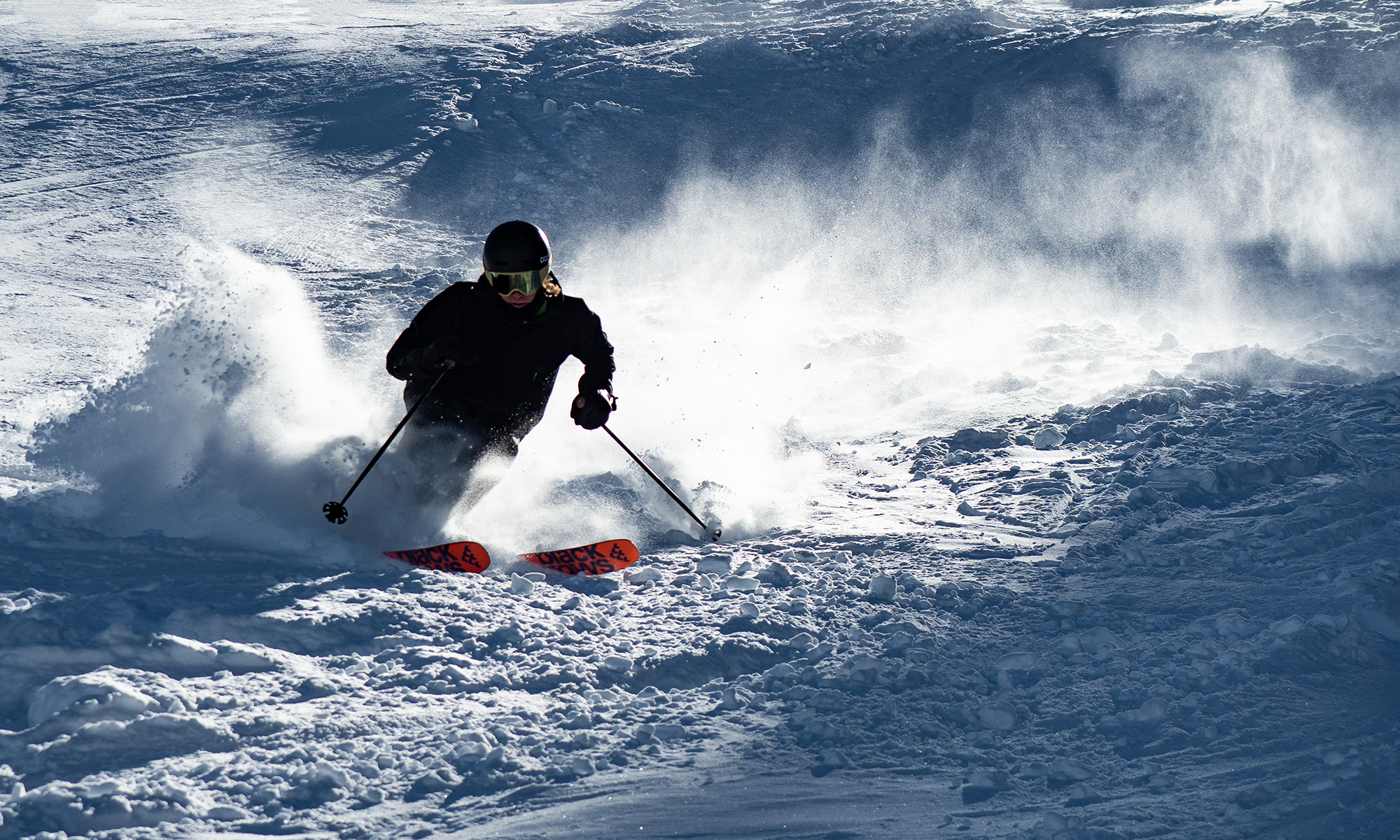


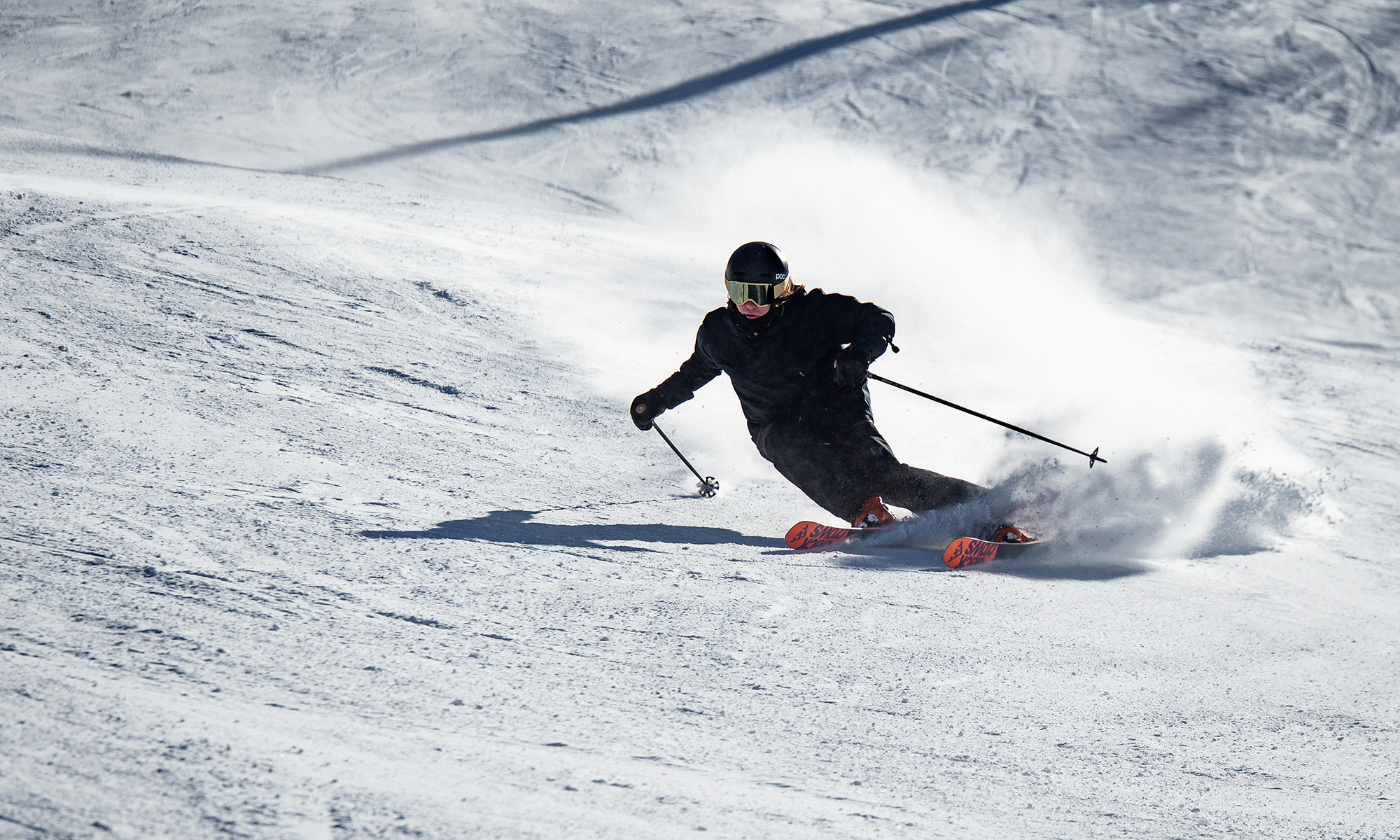
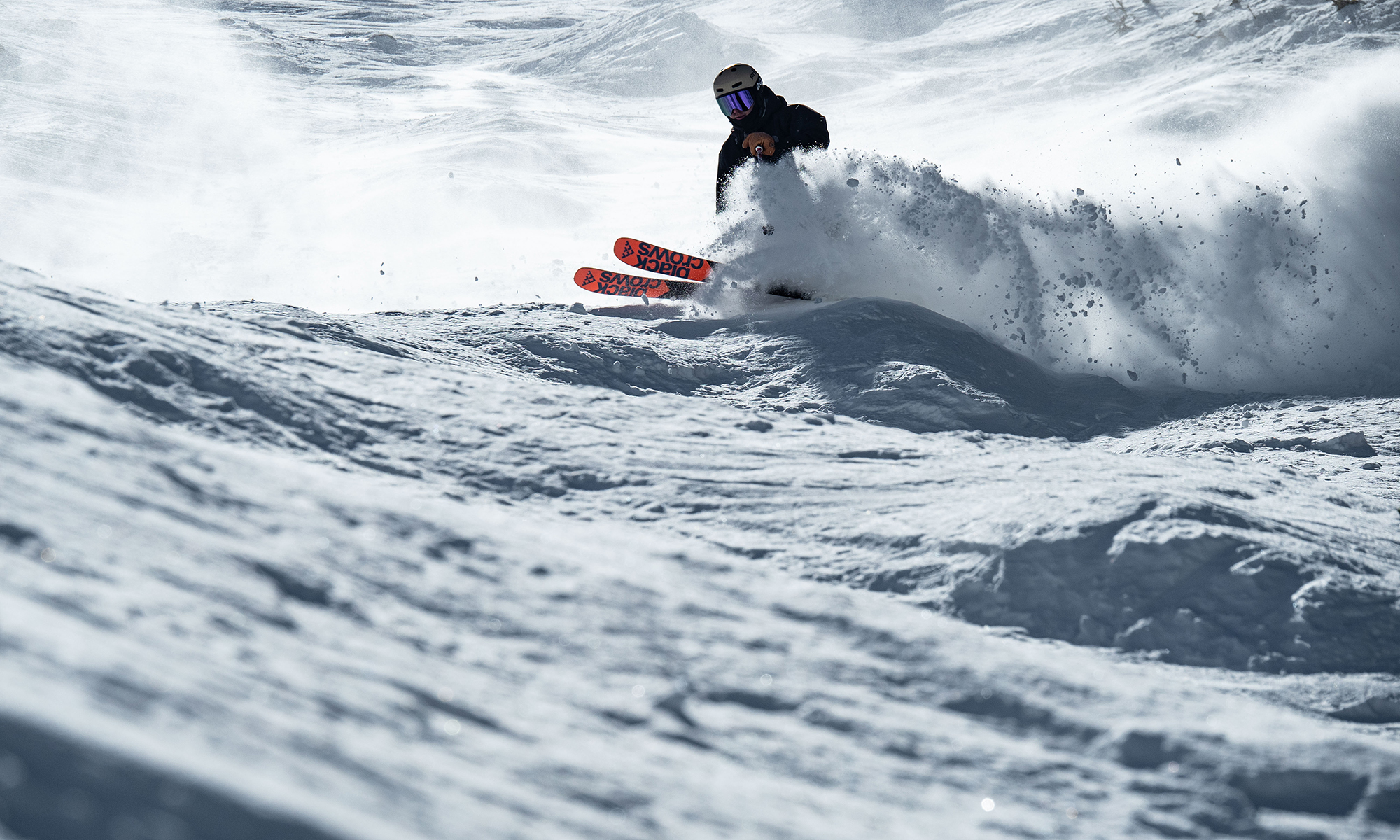
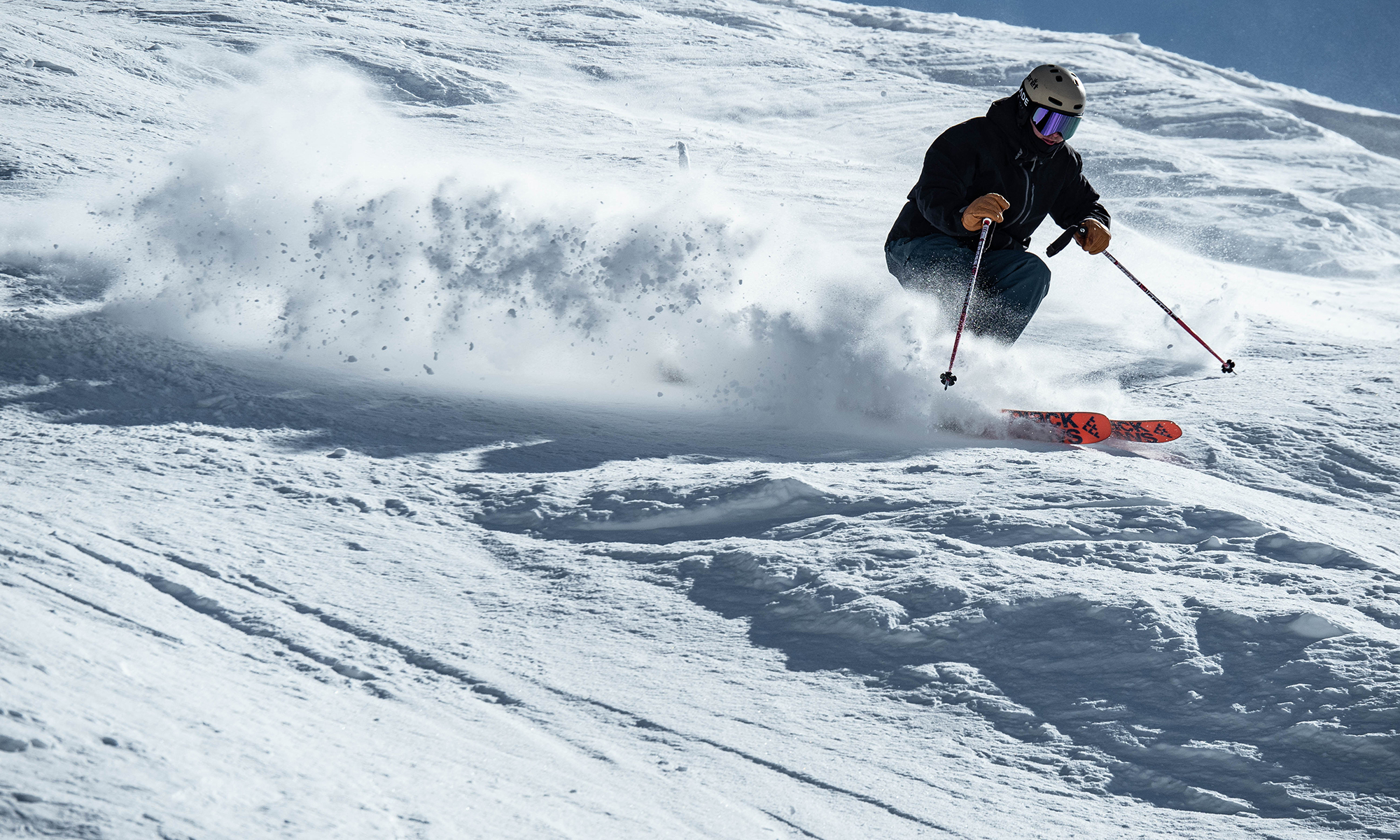
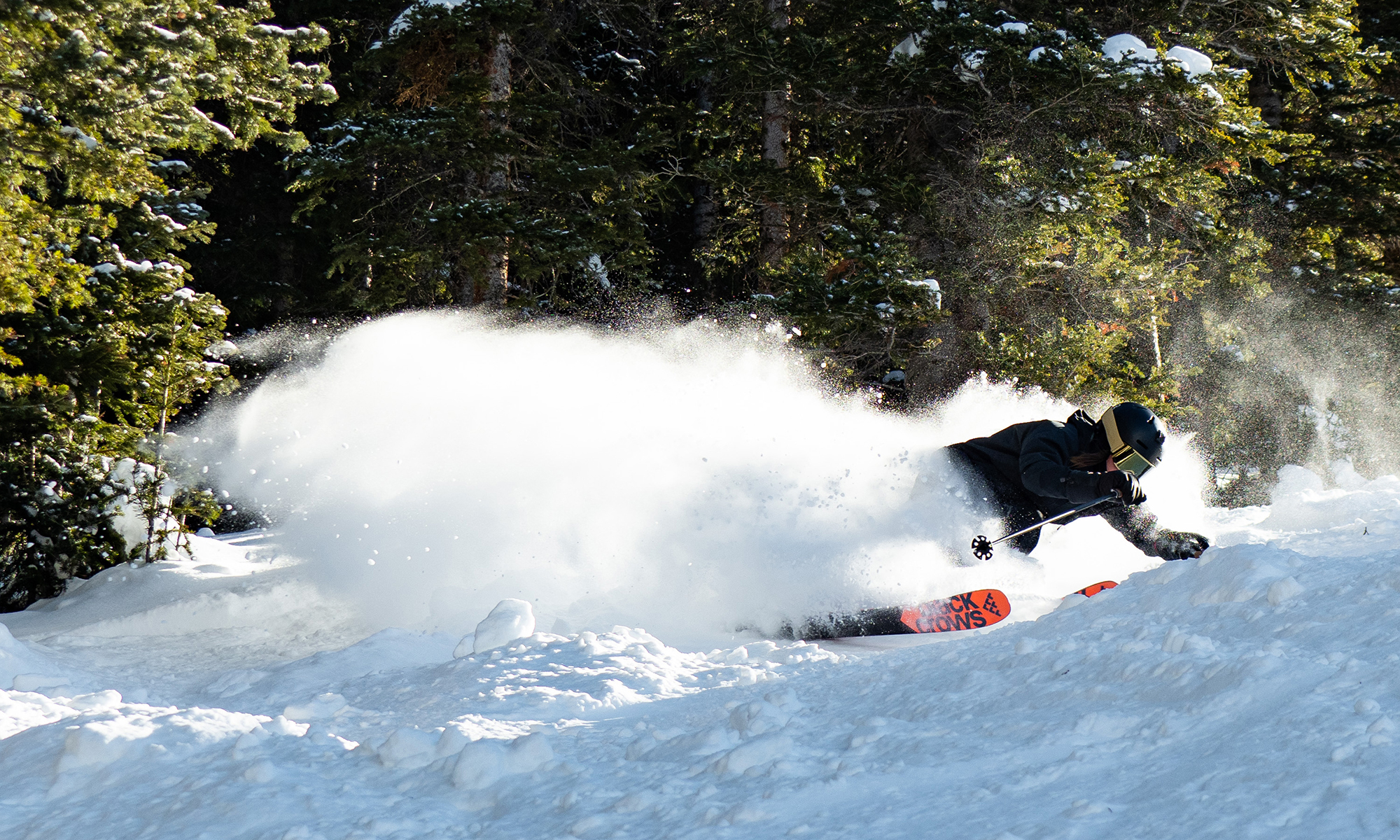
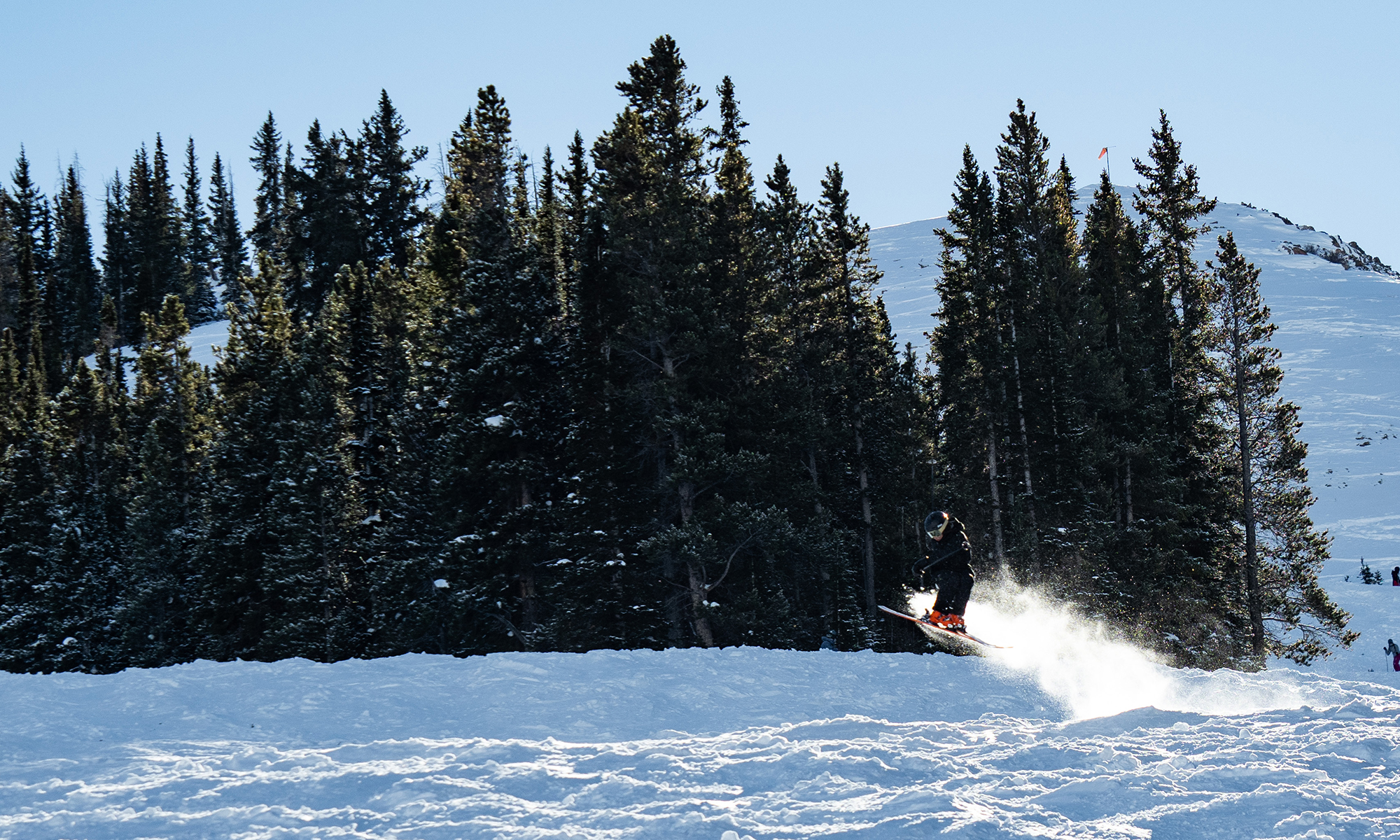

How would the Black Crows Serpo compare to the Fischer ranger 92ti?
Thats a great question Gary. I wonder how the Serpo would compare to the Ranger 92Ti and the Armada Declivity 92Ti.
What’s your take on mounting back a little? I find mine stupid easy and very pivoty, but I feel too far forward for railing turns in a balanced fashion. All my other skis are somewhere 8.75-10 back (QST 106 and Beast98, both have fair amounts of rocker on either end as well).
cheers
Dan
Neutralising binding delta withbsome shims took care of 100% of the balance issue. Serpo skis awesome now.
Super accurate review! I’ve skied on my serpo for 2 weeks.
Pro: they have good carving ability, nice edge hold, and responsive when going to next turn. They are pretty light, doing so well in the bumps/moguls, and give me much confidence to swing
Con: bad suspension. I have got much experience on the off-piste crud. When I do high-speed carving on the hard none-flat groomers, it shakes severely, my feet was feeling numb